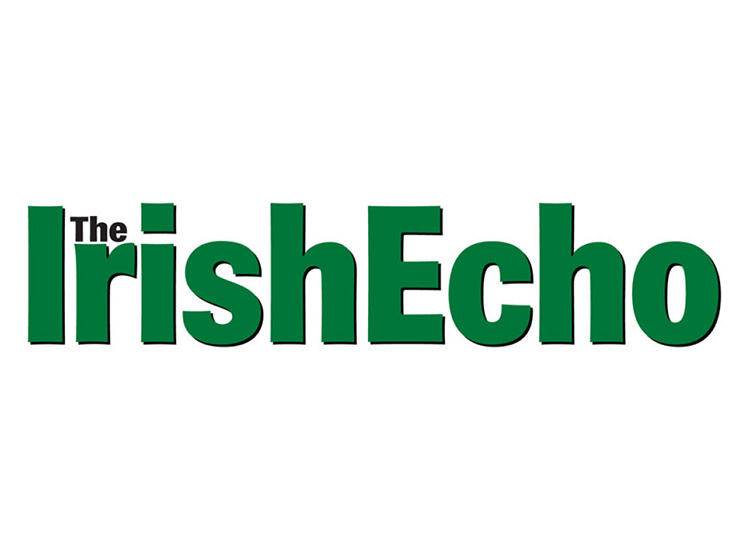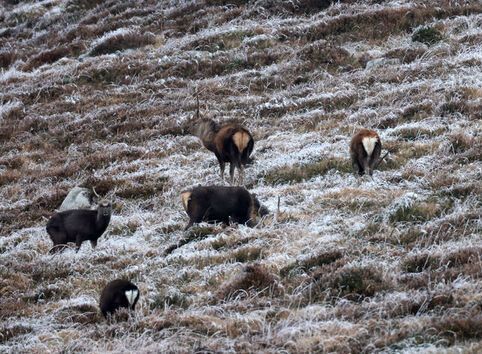Whittled Away" lays bare the challenges facing wild Ireland
By Padráic Fogarty
The Wild Atlantic Way is widely acknowledged to be one of the best tourism initiatives to come out of Ireland in recent decades and, living up to its name, has proved to be wildly popular.
One prominent hotelier proclaimed that it was the best thing to happen to Ireland since the launch of Aer Lingus in 1936.
The three words have managed to evocatively encapsulate the heaving ocean and crashing waves to put the West of Ireland touring route on a par with California’s Big Sur or Australia’s Great Ocean Road. It has become woven into our “tourism product,” benefiting from Ireland’s reputation for friendly people, colourful built heritage and “green” association with a healthy environment.
The latter is a given of course; what could be closer to untamed nature than the churning Atlantic and rough-hewn coastline of the western seaboard? And to a certain extent it’s all true – the visitor is guaranteed to breathe the cleanest, freshest air on Earth and swim in some of the cleanest waters in Europe. The job of the marketing agencies is practically done for them. But nature is more than the inert water and air that swirl around our island. It is also the dolphins and whales, the seabirds and the fish that swim unseen from the shallows to the unfathomable depths.
The impression of abundance and unsullied nature is ever present in the Wild Atlantic Way marketing material, but here the case is not so strong. Despite the assumed association between the unbridled elements and a robust natural world, the truth is somewhat different.
The crawfish (or sometimes referred to as the crayfish or spiny lobster) is a large crustacean resembling the more familiar lobster in appearance but lacking the formidable claws of the latter.
Like its cousin it is highly sought-after among diners, not Friday fish-eaters mind you, think more high-end seafood restaurants in Paris or Barcelona.
In their heyday they were selling for £30 (punts) a kilo (over €53 in today’s money, or $60), a princely catch for a fisherman.
The crawfish lives in the rocky shallows and can be caught with small, open or half-deck boats so that the catches could not be usurped by the disastrous European Common Fisheries Policy (whose widely-despised quotas hold writ only beyond six miles from the shore).
This was a high-value seafood product, benefiting local communities and fishermen who had practiced their craft for generations.
And so it could have remained for evermore had wise management of an infinitely renewable resource been introduced at the right time.
In the early 1990s these small-scale fishermen landed 170 tonnes of crawfish but only 10 years later this had plummeted by 70% to only 40 tonnes, a figure that has declined even further since.
Indeed, the crawfish is now labelled as “threatened with extinction” in European waters – one of an unknown number of marine species that have dwindled in number in recent decades (no government program monitors the health of these species and although there are protected species in Ireland, no species of marine fish or invertebrate benefits from this legal safeguard).
According to the Marine Institute, Ireland’s leading body for marine research, “the cause of this decline is widely regarded as the use of ‘cray nets’ – tangle netting which causes considerable destruction to crustacean and fish stocks.”
They added: “many, possibly the vast majority, of fishermen would like to see its use prohibited but it is still legal.”
Tangle netting, rather as its name suggest, is an indiscriminating ball of monofilament line which traps all which falls in its path. In the years since its introduction it has seen not only the demise of the crawfish but many other vulnerable species of bottom-dwelling sharks and rays, is known to ensnare seals and there is even a record of a Minke whale meeting its end in a tangle net.
Despite recognising the threat that the nets posed from the onset, no authority stepped in to limit their use and today not only does the crawfish face extinction but over 60% of sharks and rays in Ireland (key elements of marine food chains) are threatened with a similar fate.
A survey of the enigmatic Angel Shark (a large beast once found throughout our coastal shallows) found less than ten in 2018. No protection measures have ever been established and the use of tangle nets continues unabated – albeit targeting other fish and crustaceans.
Predictably, this has led to not only an ecological disaster but a social and economic one.
Small-scale fishermen are a disappearing cohort along the Irish coast. As gigantic factory trawlers hoover up the remaining shoals of commercially valuable fish (along with an unknown number of dolphins and other marine life) coastal communities are left with lobsters and crabs, themselves declining due to lack of sensible management.
Today, the seas around Ireland are empty of life, both of the human and non-human kind, when compared with only a generation ago. All this is largely invisible to the casual observer.
More obvious to the visitor may be the loss of life on land where similar tales to that of the humble crawfish have unfolded.
With recent advances in recording of biological diversity – most notably with the establishment of the National Biodiversity Data Centre in Waterford – we now know that up to a third of all groups of plants and animals are threatened with extinction or “near threatened” in Ireland.
This includes birds, bees, butterflies, fish, mosses, flowering plants, dragonflies, snails and water beetles. Mammals come out well, but this is largely because so many have already gone extinct, including the wild boar, the wolf and the bear.
In fact, nearly 120 types of plants and animals have gone extinct entirely since the arrival of human beings. Some, like the crane and the sturgeon, were central to local heritage and folklore but most were obscure little things which have names familiar only to the specialist.
They have mostly vanished without fanfare or spectacle. Today, the Curlew and Corncrake hang on in desperately low numbers but at least there is a fight on to preserve their characteristic cries. The Red Grouse, the Nightjar, the Quail and the Ring Ouzel (all types of bird) on the other hand, have faded from our countryside with barely a whimper.
The causes of this great vanishing has largely come about through dramatic changes in how the land is used. The oak forests of course are long gone, and Ireland is second only to Iceland for its paucity of woodland.
The great bogs of the Midlands have been entirely worked over, only 0.6% of their original surface remains. The mountain bogs, synonymous with the uplands and west, have fared little better.
Due to forestry plantations, burning and turf-cutting, only 20% remain “worthy of conservation.” Most of our rivers and lakes are polluted and drainage schemes have drastically altered over 10,000km of rivers (the iconic salmon is on the endangered species list and even the European Eel is “critically endangered”).
But these pressures fall into the shadows when compared with the changes which have occurred on our farmland in recent times. In the space of a mere two generations the Irish countryside has lurched from small-scale diversity to large-scale monoculture, with larger herds of animals and greater intensity of machinery use, chemicals and imported feedstuffs.
It has resulted in a general collapse of nature with bird and insect life all but snuffed out. The enormous volumes of manure can’t be absorbed in the soil so much of it gets washed into rivers and lakes, where pollution is now the norm.
Irish agriculture is now the largest source of greenhouse gases and, ironically, climate change has left farmers increasingly vulnerable to the types of extreme weather which was experienced last year – with snow in March and a drought lasting for nearly all of the summer months.
Ironic, too, that very few farmers are benefitting economically from this industrialisation of the countryside. Nearly all farmers rely entirely on state subsidies and there are genuine fears that the entire beef industry is heading for oblivion, just like the fishing industry before it.
Like much of the world, Ireland faces an extinction crisis. We are also struggling to cope with the dangerous uncertainties that climate change will bring.
The current Fine Gael-led government has turned its back on both of these issues and this is a shame not only because many people like me can’t countenance passing on a dead and lifeless country to our children, but because there is an enormous opportunity being missed.
Restoring nature presents one of the cheapest and most effect ways of adapting to climate change (think of all the carbon to be locked away in bogs or new native woodlands). It would also be a shot in the arm for rural communities who want to catch fish, farm, or produce high quality timber.
These are the foundations of traditional family businesses that are at the heart of rural communities. For too long nature in Ireland has been seen as an impediment to progress, a barrier to development, or a set of nuisance rules handed down from Brussels.
This has left us all poorer as our heritage, landscape and quality of life is steadily whittled away and degraded - despite our increasing material wealth.
As the world around us changes, my hope is that Ireland starts to live up to the images of the Wild Atlantic Way – now that would be worth travelling for!
Pádraic Fogarty’s “Whittled Away” is available on Amazon and the Barnes & Noble website.








